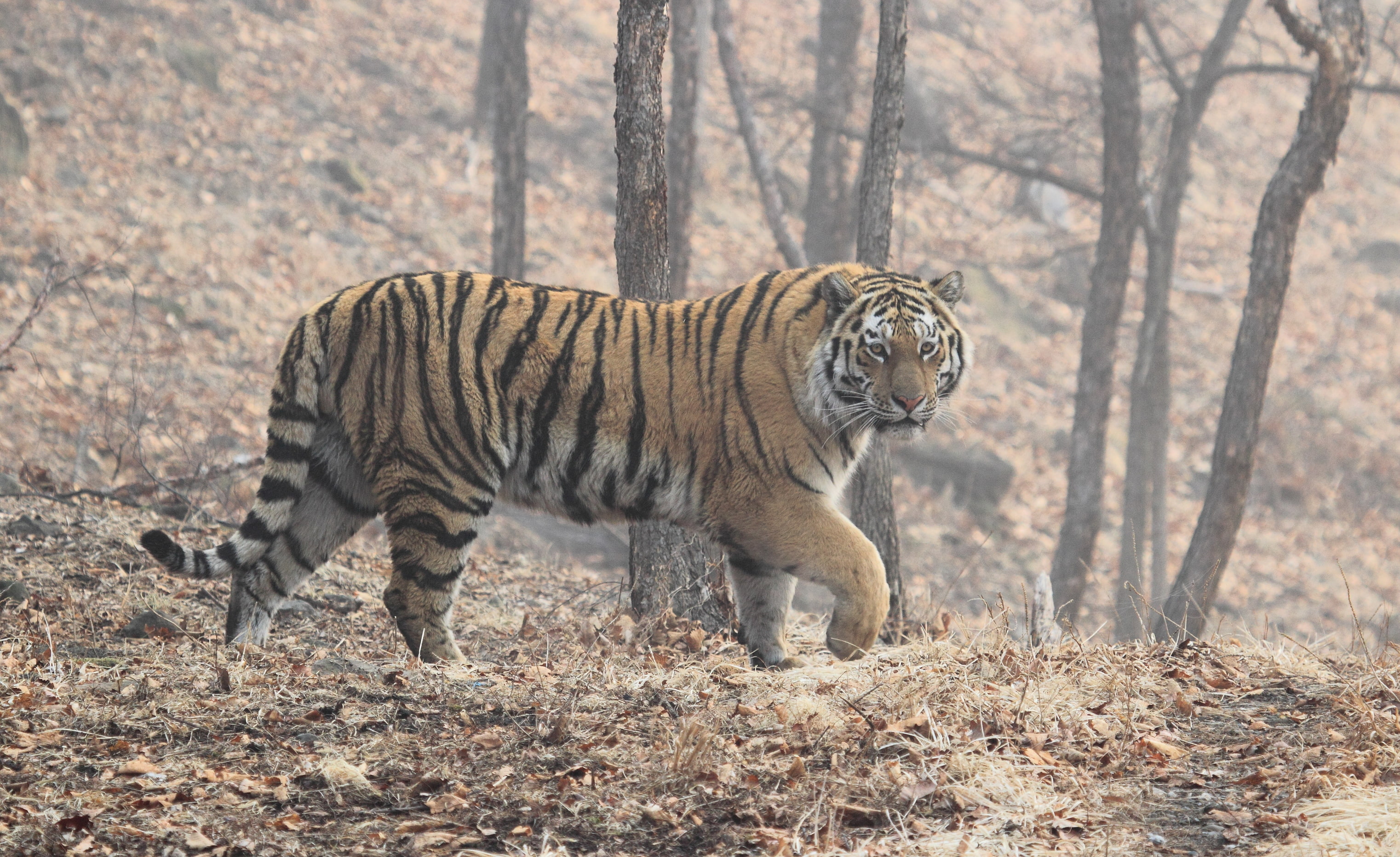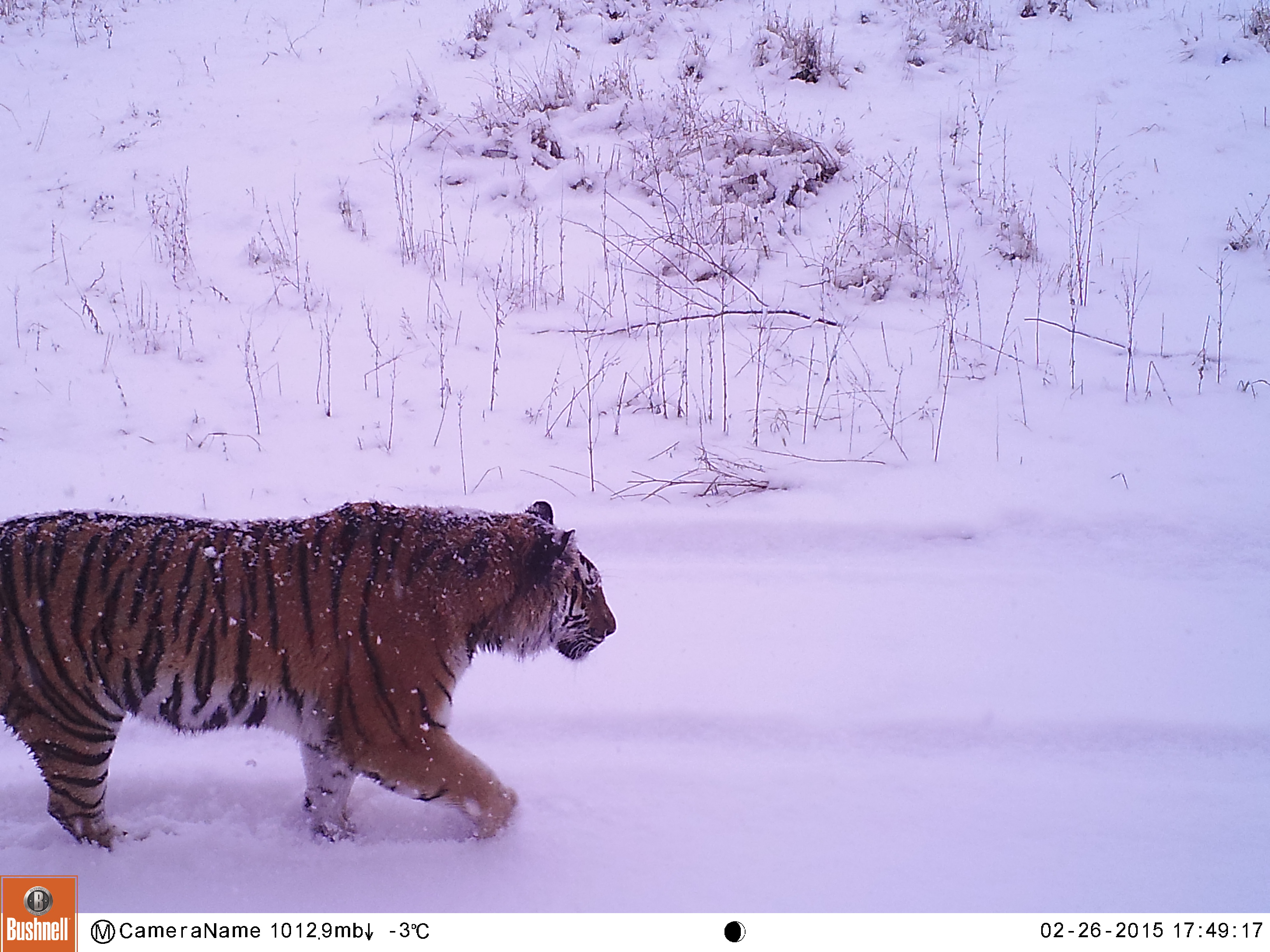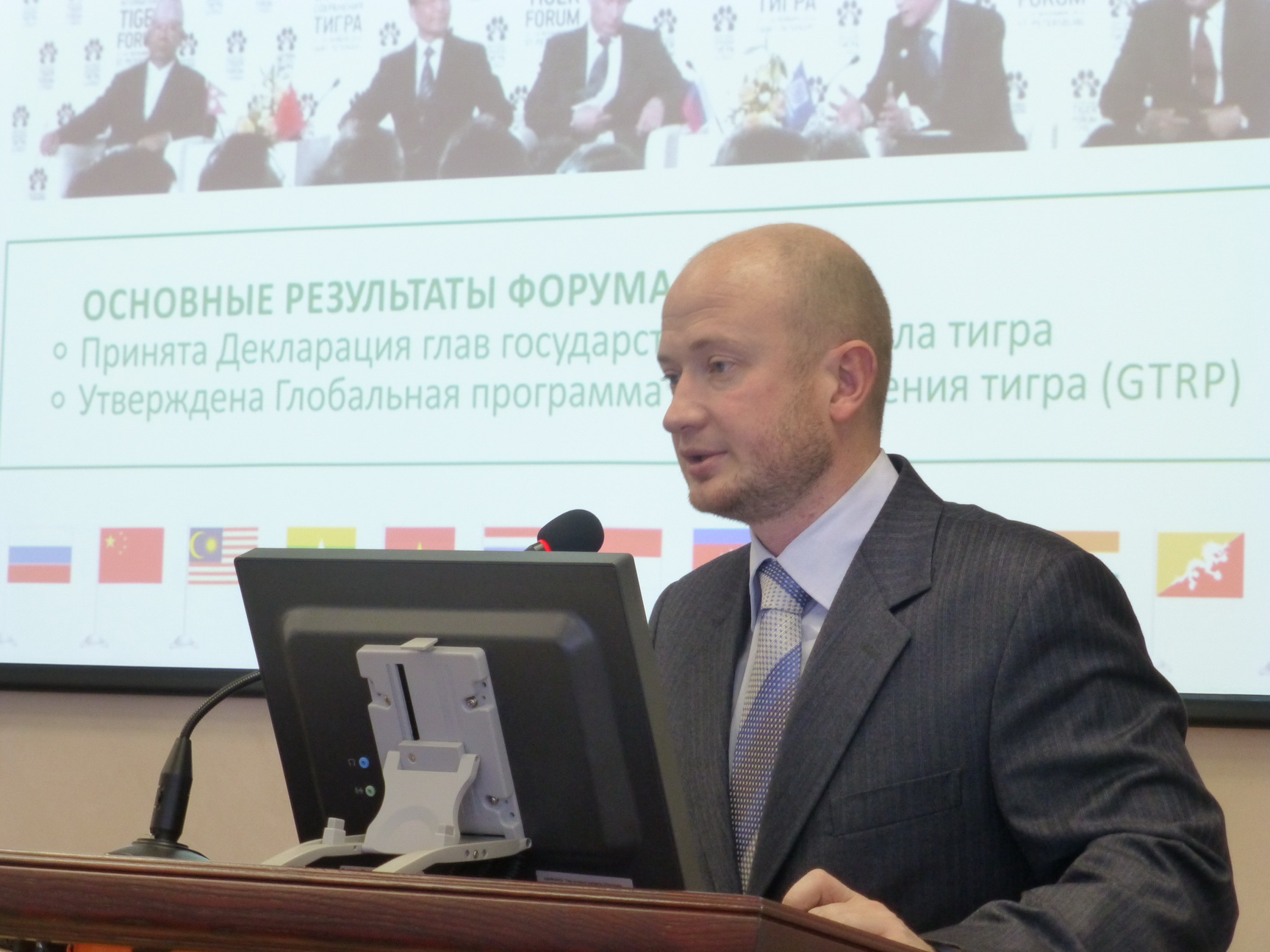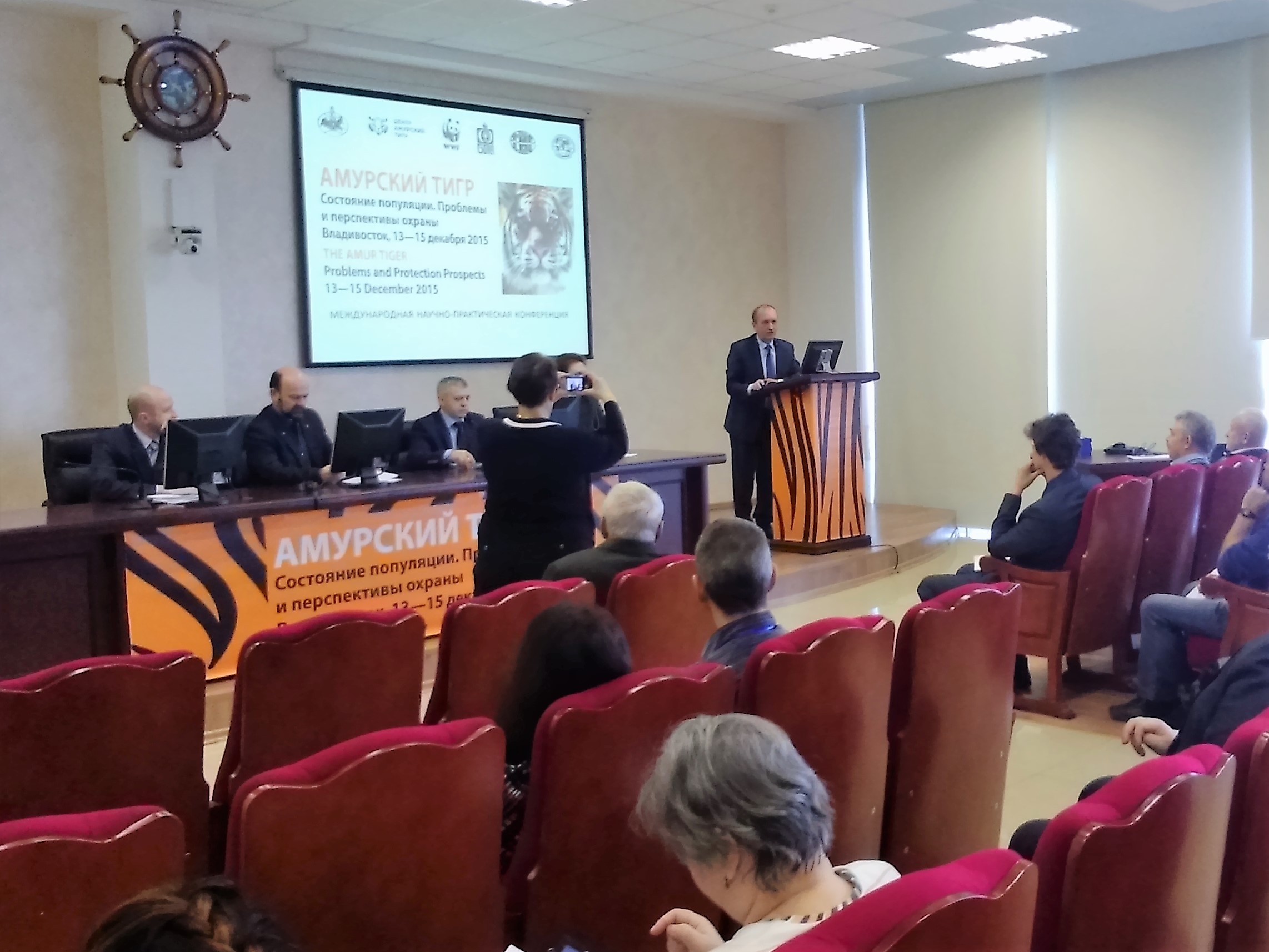The five-year results of the Strategy for the Conservation of the Amur Tiger and the 2015 assessment of the state of the population confirm that Russia has chosen the right path and fulfills its international obligations to conserve the tiger.
More than 60 experts from Russia, China, South Korea and Japan are taking part in the international scientific-practical conference "The Amur Tiger: State of the Population, Problems and Perspectives of Protection", which opened in Vladivostok on December 13. The conference was organized and held by the Ministry of Natural Resources and Ecology of the Russian Federation, the Biology and Soil Institute of the Far East Branch of the Russian Academy of Sciences, the Pacific Institute of Geography of the Far Eastern Branch of the Russian Academy of Sciences, the Amur Tiger Center with the support of the Russian Geographical Society.
“At the Tigrin Summit in 2010 in St. Petersburg, the Government of Russia outlined the task of maintaining and increasing the Amur tiger population. During this time, certain environmental protection measures have been implemented. For example, Korean cedar was included in the list of species prohibited for felling. These and other measures ensured the stability of the tiger population, which was confirmed by the data obtained during the winter survey,” comments Yury Zhuravlev, Academician of the Russian Academy of Sciences, Professor, Director of the Biological Institute of the Far Eastern Branch of the Russian Academy of Sciences, who heads the conference organizing committee.
Within three days, leading scientists and specialists of scientific and environmental organizations, together with the heads of specially authorized regional authorities of the Far East and the Ministry of Natural Resources of Russia, will sum up the 5-year results of the implementation of the “Strategy for the conservation of the Amur tiger in the Russian Federation”, calculated until 2022 identified by this basic document.
“As part of the implementation of the Strategy for the Conservation of the Amur Tiger in Russia, approved in 2010, it was possible to expand the “vital” space of the Red Book subspecies through joint efforts. In the Primorsky Krai, the national parks “Land of the Leopard” and “Bikin”, as well as the Sredne-Ussuriysky reserve were created. The total area of protected tiger habitats increased over 5 years by more than 1.5 million hectares and reached 24% of the range of the Amur tiger. Among the unfulfilled points of the Action Plan, it is necessary to note the delay in organizing mandatory protection zones around federal protected areas and blocking the creation of the Pompeevsky National Park in the Jewish Autonomous Region. By the way, 3 out of 5 tigers released by Vladimir Putin in 2014 now live on this territory,” commented Yuri Darman, Ph.D..
The main scientific reports are devoted to monitoring the status of the population of rare cats and the results of large-scale accounting of the Amur tiger and the Amur leopard, which was conducted in the winter of 2014-2015 in the Russian Far East.
“The frontal, or, as they are also called, “continuous” accounting of the Amur tiger is a large-scale work that required the participation of a huge number of people and organizations. Traces of a tiger were noted throughout the winter, and at the second stage a “one-time” tiger survey was carried out, which lasted several days, during which more than 1,200 routes were passed, with a total length of about 23,000 km. It is characteristic that for every 20 km of the traversed path, accountants recorded at least one track of a tiger. As a result, the counting coordinators counted the number of Amur tigers at 523-540 individuals, of which males - 133-136 individuals, females - 208-213 individuals, tiger cubs - 98-100 individuals, the rest were attributed to tigers of indeterminate sex and age - 84- 91,” commented Vladimir Aramilev, Ph.D., Acting Director of the Joint Directorate of Lazovsky Nature reserve and Zov Tigra National Park, scientific supervisor of tiger accounting 2015.
“The short-term goal of stabilizing the number of tigers at the level of 500 individuals has been fulfilled, which clearly confirms the correctness of the choice of the concept of protecting the Amur tiger, which formed the basis of the Strategy updated five years ago. The state and organizations involved in the process in the right direction are implementing the Action Plan to the Strategy,” - comments Sergey Aramilev, PhD, director of the Primorsky branch of the Amur Tiger Center. - “Nevertheless, to achieve the common goal set for Russia in the Global Tiger Recovery Program on the planet, to increase the number to 700 individuals by 2022, the Action Plan for the implementation of priority measures for the conservation of the Amur tiger is needed. And this is normal when, over time, the Plan is being adjusted, because, on the one hand, much has already been accomplished, and on the other, new problems and threats appear that did not exist in 2010.”
Scientific data and information are basic information for environmental activities. However, no matter how high-tech were research, they do not directly protect the tiger. Direct protection is possible only through practical measures, which, undoubtedly, must be based on scientific knowledge.
“Our common task,” notes S. Aramilev, “is to find a balance between scientific research and practical steps, while the latter should be disproportionately larger.”
During the conference, scientists and conservationists will propose ideas for inclusion in the Action Plan to the Strategy for the Conservation of the Amur Tiger in the Russian Federation. According to experts, the adjustments adopted at the meeting and proposed by the Ministry of Natural Resources of Russia will help not only achieve the goal of increasing the number of Amur tigers, but also ensure the harmonious coexistence of man and tiger in the same territory.




